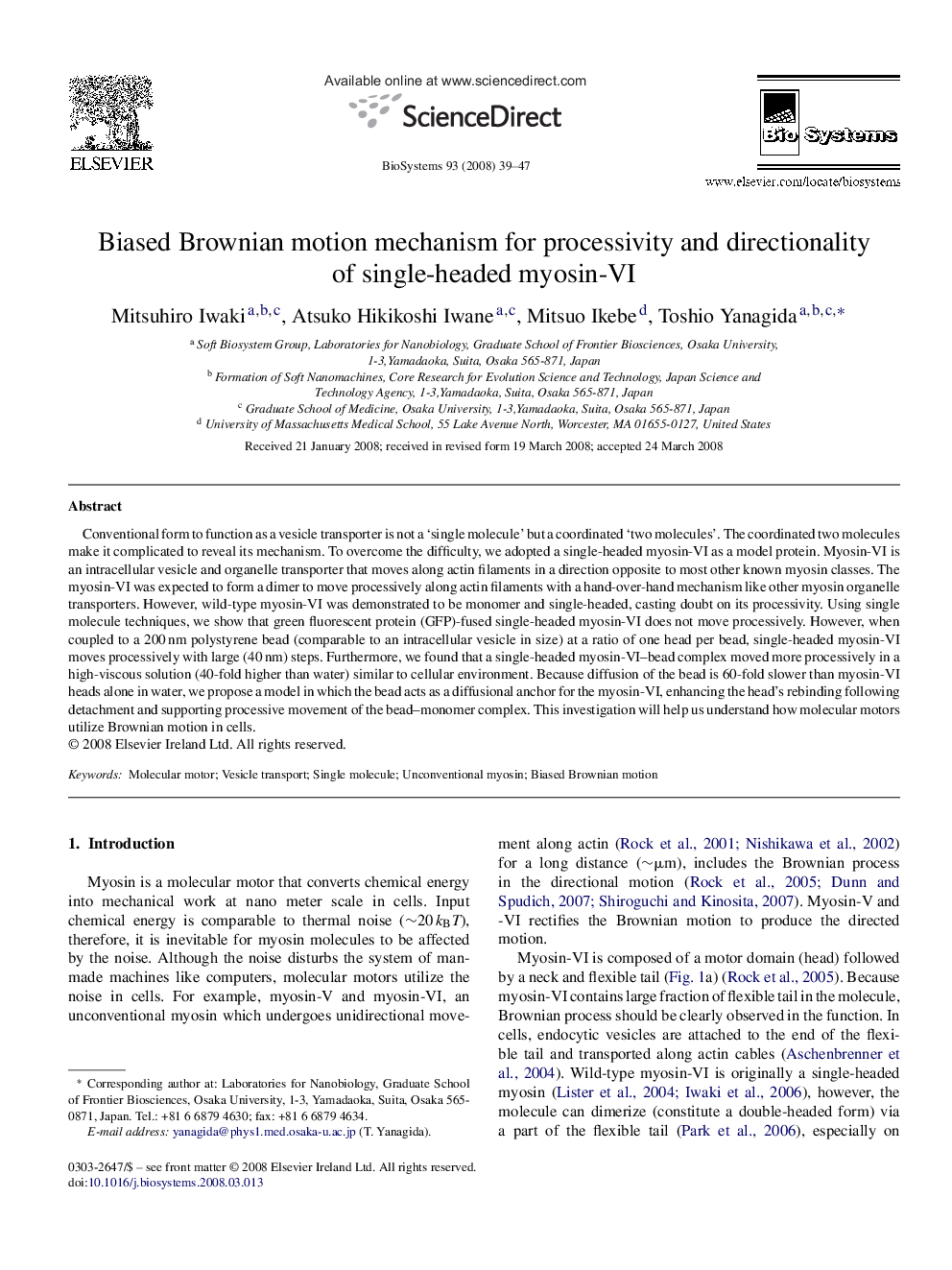| Article ID | Journal | Published Year | Pages | File Type |
|---|---|---|---|---|
| 2076764 | Biosystems | 2008 | 9 Pages |
Abstract
Conventional form to function as a vesicle transporter is not a 'single molecule' but a coordinated 'two molecules'. The coordinated two molecules make it complicated to reveal its mechanism. To overcome the difficulty, we adopted a single-headed myosin-VI as a model protein. Myosin-VI is an intracellular vesicle and organelle transporter that moves along actin filaments in a direction opposite to most other known myosin classes. The myosin-VI was expected to form a dimer to move processively along actin filaments with a hand-over-hand mechanism like other myosin organelle transporters. However, wild-type myosin-VI was demonstrated to be monomer and single-headed, casting doubt on its processivity. Using single molecule techniques, we show that green fluorescent protein (GFP)-fused single-headed myosin-VI does not move processively. However, when coupled to a 200Â nm polystyrene bead (comparable to an intracellular vesicle in size) at a ratio of one head per bead, single-headed myosin-VI moves processively with large (40Â nm) steps. Furthermore, we found that a single-headed myosin-VI-bead complex moved more processively in a high-viscous solution (40-fold higher than water) similar to cellular environment. Because diffusion of the bead is 60-fold slower than myosin-VI heads alone in water, we propose a model in which the bead acts as a diffusional anchor for the myosin-VI, enhancing the head's rebinding following detachment and supporting processive movement of the bead-monomer complex. This investigation will help us understand how molecular motors utilize Brownian motion in cells.
Related Topics
Physical Sciences and Engineering
Mathematics
Modelling and Simulation
Authors
Mitsuhiro Iwaki, Atsuko Hikikoshi Iwane, Mitsuo Ikebe, Toshio Yanagida,
